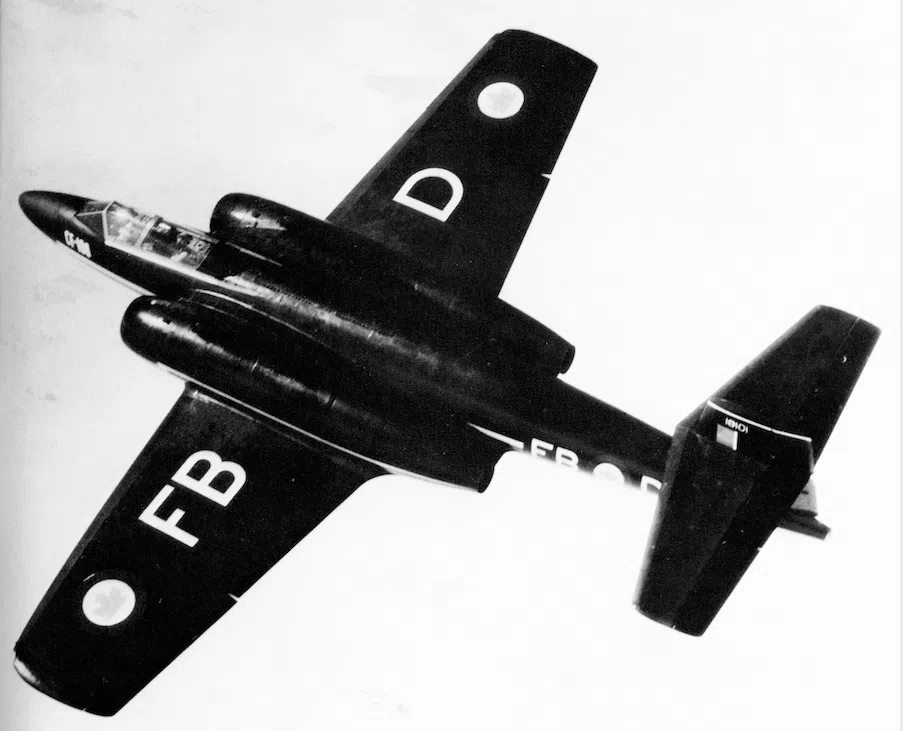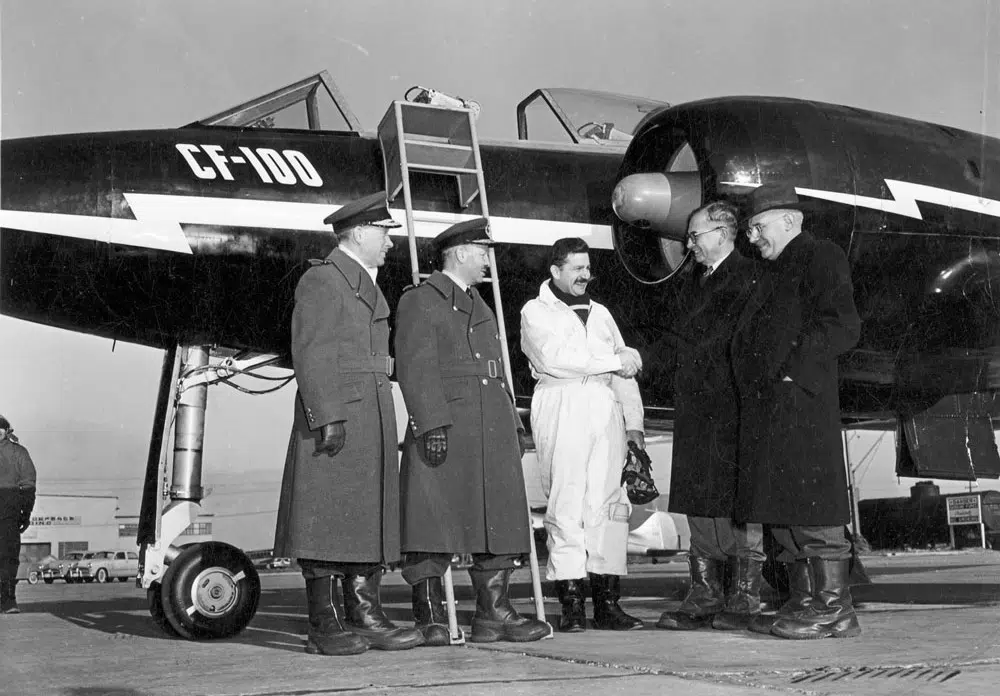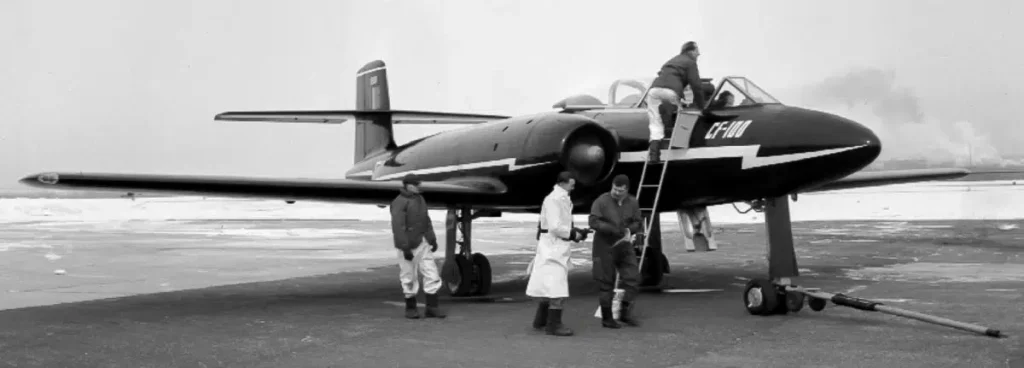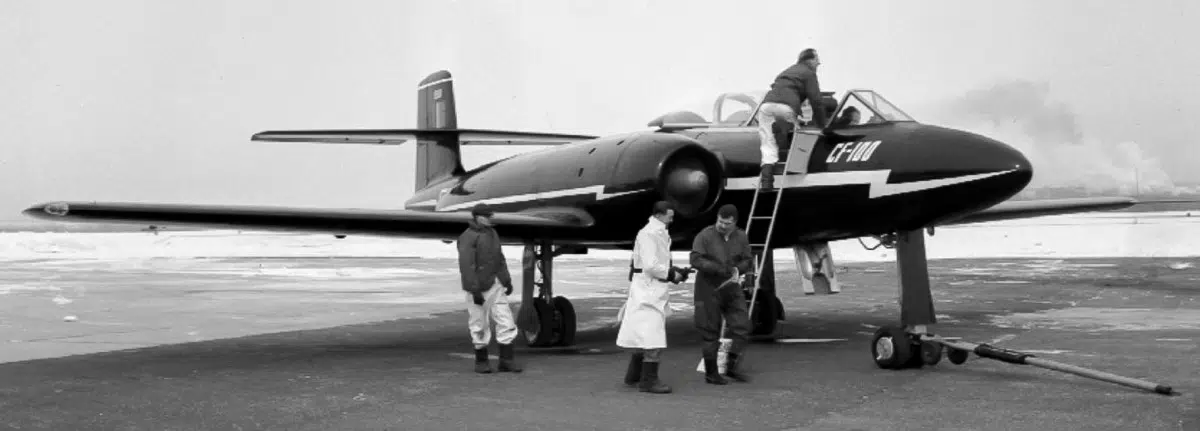First Flight of the Avro CF-100 ‘Canuck’ 19-Jan-1950
The Avro Canada CF-100 Mark 1 “Canuck” prototype, 18101, conducted its maiden flight on January 19, 1950, powered by a pair of Rolls-Royce Avon RA 3 turbojet engines.
It holds the distinction of being the only Canadian-designed fighter to enter mass production.
The CF-100 Mark 1 prototypes were 52 feet, 6 inches (16.002 meters) long, with a wing span of 52 feet, 0 inches (15.850 meters) and overall height of 14 feet, 6.4 inches (4.430 meters). They had an empty weight of 19,185 pounds (8,702 kilograms), and gross weight of 31,877 pounds (14,459 kilograms).
Production series aircraft were powered by the domestically-developed Avro Orenda engine. Flight testing demonstrated the CF-100’s relatively short takeoff run and high climb rate, making it well-suited for its role as an interceptor.
On December 18, 1952, Squadron Leader Janusz Żurakowski, Avro’s chief development test pilot, took the CF-100 Mk 4 prototype to Mach 1.10 in a dive from 14,000 meters (45,000 feet), making it the first straight-winged jet aircraft to achieve controlled supersonic flight.
The CF-100 primarily served with the Royal Canadian Air Force and also procured in small numbers by Belgium to equip the Belgian Air Component. A total of 692 were produced.
Introduced in 1952 during the Cold War, the CF-100 was typically deployed at NATO bases in Europe and North America as part of the North American Aerospace Defense Command (NORAD). In addition to its use by frontline squadrons, it was also supplied to operational training units and frequently used for secondary duties, including aerial reconnaissance and electronic warfare roles.
